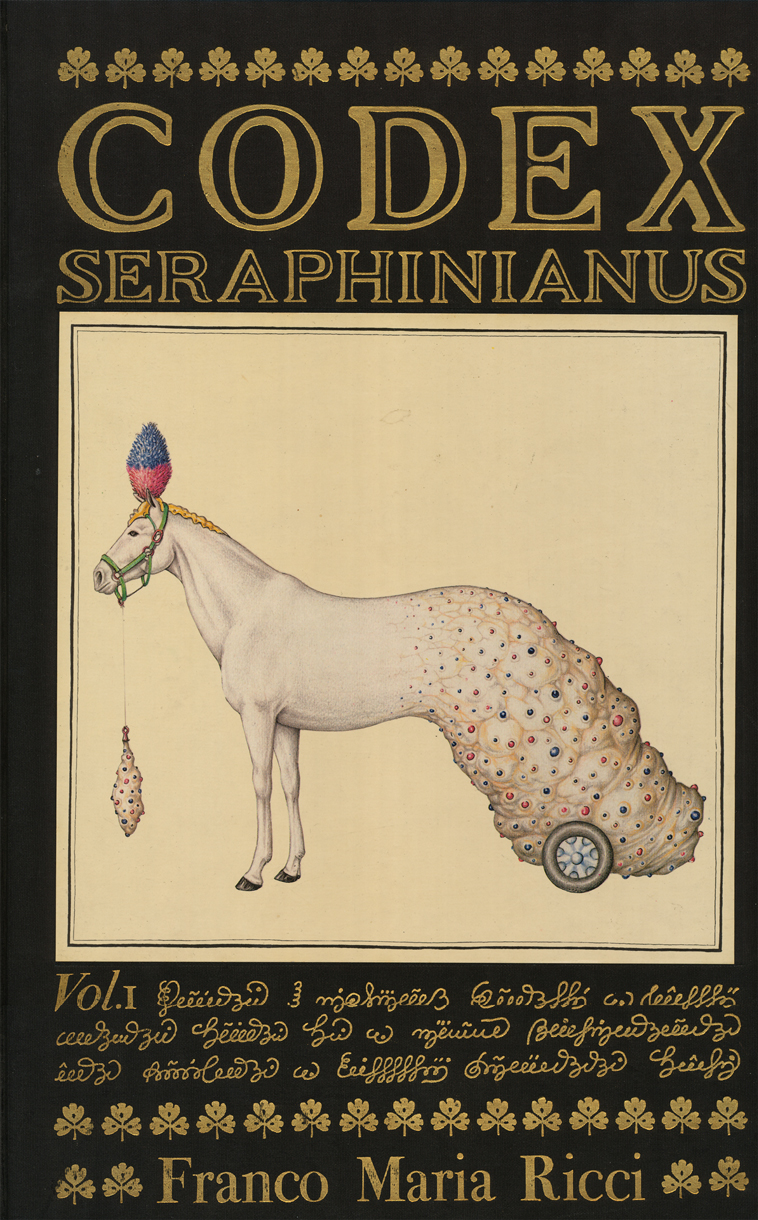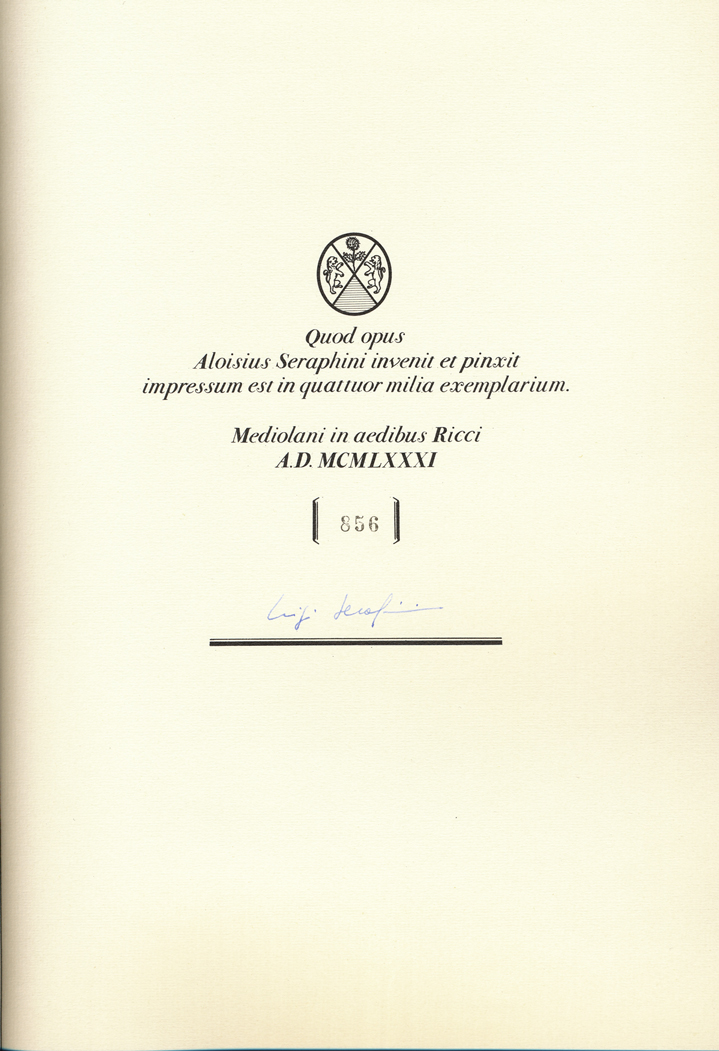Luigi Serafini
Luigi Serafini
Codex Seraphinianus Signed 2-Volume Limited First Edition - 1981
Scarce 2-volume 1981 Limited First Edition, First Printing of the elusive Codex Seraphinianus by Luigi Serafini, published in Milan, Italy by Franco Maria Ricci (FMR). Considered by many to be among the strangest and most vexing books in the world. Numbered 856 out of a limited printing of just 4000 copies and signed by the artist on the colophon page, this exceedingly hard-to-find set is printed on luxuriously textured Fabriano paper, resplendent in midnight-black silk bindings decorated with a profusion of gilt titling, encased in gorgeous black silk clamshell boxes; in fine condition overall with expected minor shelf wear.
The Codex Seraphinianus was written and illustrated by Italian graphic designer and architect, Luigi Serafini during the mid- to late 1970’s. The Codex is a masterpiece of fantasy painstakingly illustrating an encyclopedia, a travelogue or scientific study for an imaginary world in a parallel universe, with copious commentary in an incomprehensible language. It is written in a florid script, entirely invented and completely illegible, illustrated with intricate watercolor paintings. The language of the Codex has defied complete analysis by linguists for decades, although the small amount of progress that has been made seems to verify that the book does indeed contain meaningful text. The number system used for sequencing the pages, however, has reputedly been cracked by Bulgarian linguist Ivan Derzhanski.
The Codex appears to be divided into eleven chapters, partitioned into two sections. The first section looks to describe the natural world, dealing with flora, fauna, and physics. The second deals with the humanities, the various aspects of human life: clothing, history, cuisine, architecture and so on. Each chapter seems to treat a general encyclopedic topic. The topics of each separate chapter appear to be as follows:
- The first chapter describes many alien types of flora: strange flowers, trees that uproot themselves and migrate, etc.
- The second chapter is devoted to the fauna of this alien world, depicting many animals that are surreal variations of the horse, hippopotamus, rhinoceros, birds, etc.
- The third chapter deals with what seems to be a separate kingdom of odd bipedal creatures, apparently engineered for various purposes.
- The fourth chapter deals with something that seems to be physics and chemistry, and is by far the most abstract and enigmatic.
- The fifth chapter deals with bizarre machines and vehicles.
- The sixth chapter explores the general humanities: biology, sexuality, various aboriginal peoples, and even shows examples of plant life and tools (such as pens and wrenches) grafted directly into the human body.
- The seventh chapter is historical. It shows many people (some only vaguely human) of unknown significance, giving their times of birth and death. It also depicts many scenes of historical (and possibly religious) significance. Also included are examples of burial and funereal customs.
- The eighth chapter depicts the history of the Codex’s alien writing system.
- The ninth chapter deals with food, dining practices, and clothing.
- The tenth chapter describes bizarre games (including playing cards and board games) and athletic sports.
- The eleventh chapter is devoted entirely to architecture.
Many view the Codex as a sort of an elaborate parody of the real world. The invented script of the book imitates Western-style writing systems (left-to-right writing in rows; an alphabet with uppercase and lowercase; probably a separate set of symbols for writing numerals) but is much more curvilinear reminding some of Semitic scripts. The writing seems to have been designed to appear, but not actually be, meaningful, like the Voynich Manuscript. Whilte subsequent lesser editions have been published and are expensive in their right, this 1981 first edition is extremely hard-to-find, with few known copies in libraries around the world.
First released in this limited Italian edition in 1981, the book has periodically been published in France, Spain, and the United States. The author, an Italian artist, has never spoken about the origins of the book or the meaning of his language, but theorists surmise that it is inspired by the Borges story “Tlön, Uqbar, Orbis Tertius” about a book from the (fictional) country of Uqbar that documents every aspect of an imaginary world called Tlön. Borges writes: “The metaphysicians of Tlön are not looking for truth, nor even for an approximation of it; they are after a kind of amazement.”
In September 2011 the esteemed British Museum mounted a special exhibition, “Out of this World: But Not as You Know It,” featuring many of the world’s most influential science fiction treasures, among them the Codex Seraphinianus.
A fascinating academic treatise, by Professor Peter Schwenger of Mt. Saint Vincent University in Halifax, discusses the Codex in some detail here. In 1984 Luigi Serafini followed up on this extraordinary work with another book of similar intrigue and scarcity, the Pulcinellopedia Piccola.




